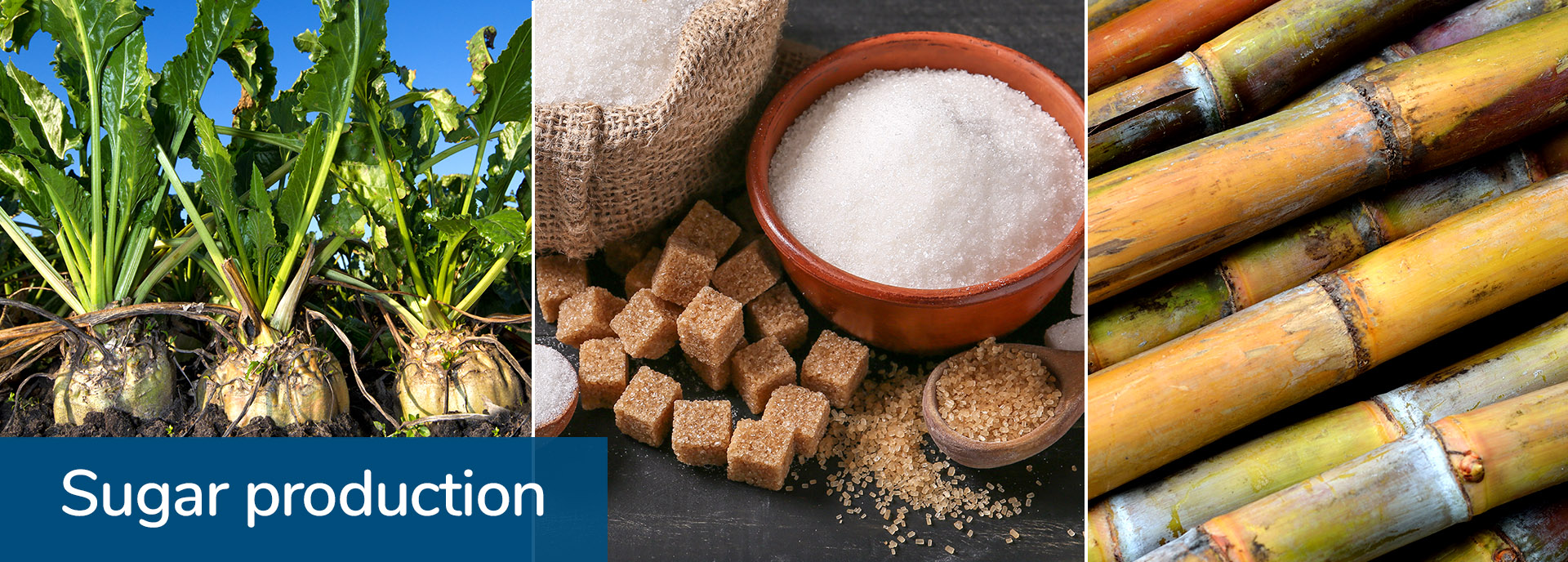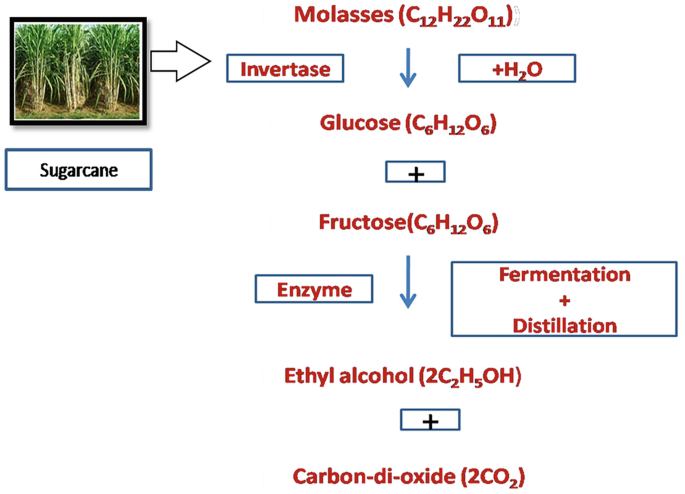Introducing the Surprising Use Sugar Cane in Industry and Food
Sugar Cane is commonly recognized largely for its role in sweeteners, yet its applications prolong much past that domain. In various sectors, it adds to biofuels and eco-friendly plastics, showcasing its potential for sustainability. On the other hand, in the culinary globe, sugar Cane improves both mouthwatering and sweet recipes. This exploration reveals exactly how this flexible plant sustains ecological and health and wellness benefits, welcoming a closer take a look at its multifaceted contributions. What lies beneath its wonderful surface area?
The Role of Sugar Cane in Biofuels
Although several crops add to the manufacturing of biofuels, sugar Cane stands apart because of its high sugar web content and efficiency in transforming sunshine into energy. This exotic lawn is cultivated thoroughly in areas with suitable climates, where it grows and generates considerable yields per hectare. The sugar extracted from Cane can be fermented to produce ethanol, a renewable resource resource that minimizes reliance on nonrenewable fuel sources.
Sugar Cane biofuels emit fewer greenhouse gases contrasted to standard petroleum-based gas, making them a much more environmentally pleasant option. Nations like Brazil have actually effectively incorporated sugar Cane into their energy plans, advertising its usage in transport and power generation. The flexibility of sugar Cane in biofuel production likewise supports country economic climates by developing work chances in industrial and farming industries. Overall, sugar Cane plays an important role in the search of lasting power solutions and contributes to global initiatives against environment adjustment.
Sugar Cane as a Resource of Naturally Degradable Plastics
As the globe comes to grips with the plastic contamination crisis, sugar Cane becomes an encouraging resource for biodegradable plastics. Derived from its abundant cellulose, sugar Cane can be processed right into polylactic acid (PLA), an eco-friendly polymer that acts as a lasting choice to traditional petroleum-based plastics. This environment-friendly material not only lowers dependence on nonrenewable fuel sources yet likewise minimizes carbon exhausts during manufacturing.
Industries are increasingly taking on sugar cane-based plastics for different applications, including packaging, disposable cutlery, and farming movies. These items disintegrate naturally, reducing the lasting environmental effect connected with conventional plastics.
Moreover, the cultivation of sugar Cane supports country economies and advertises lasting farming methods. As study advances, the possibility for sugar cane-derived naturally degradable plastics to replace single-use things continues to grow, offering a glimmer of hope in the battle against plastic waste and promoting a round economic situation.
Culinary Applications of Sugar Cane in Savory Dishes
Sugar walking stick, commonly celebrated for its sweet taste, likewise locates an area in the culinary domain of tasty dishes. Its juice, when minimized, can create an abundant polish for meats, conveying both taste and a shiny surface. In numerous cuisines, sugar Cane is utilized to marinade proteins, where its natural sugars boost caramelization throughout food preparation.
Furthermore, sugar Cane can be juiced and integrated with seasonings to produce vivid sauces, particularly in Asian and Caribbean meals. The fibrous remnants of sugar walking cane, called bagasse, can likewise be used in cooking, infusing a refined sweet taste right into vegetables and seafood.
Moreover, sugar Cane syrup works as a different sweetener in salad dressings, balancing level of acidity and including depth to tastes. Chefs increasingly check out these opportunities, showing that sugar Cane prolongs beyond treats, enhancing savory cooking experiences with its unique qualities and versatility.
Ingenious Desserts Including Sugar Walking Stick
Exactly how can the all-natural sweetness of sugar Cane be transformed right into cutting-edge treats that delight the taste? Cooks globally are exploring this flexibility by including sugar Cane right into different pleasant deals with. One prominent method is using sugar Cane syrup as a natural sweetener, improving the tastes of cakes and breads while offering a distinct caramel touch.
In addition, sugar Cane can be processed into granulated kind, making it a perfect active ingredient for cookies and confections that need an unique sweet taste (What Is Sugar Cane Used For). Ingenious ice creams and sorbets made from sugar Cane puree display its invigorating qualities, often incorporated with exotic fruits for an unique twist
Mousse and desserts infused with sugar Cane include a layer of complexity to typical treats, supplying a delightful balance of sweet taste and appearance. Generally, the cooking opportunities of sugar Cane in treats remain to inspire creativity, capturing the essence of this natural ingredient in delightful new types.
Sugar Cane Juice: A Refreshing Beverage Choice
Sugar Cane juice uses a nourishing choice to lots of traditional beverages, packed with minerals and vitamins that promote total health and wellness. Both modern and ancient dishes showcase its convenience, making it a preferred selection in various cultures. Additionally, sugar Cane juice acts as a healthier sweetening option, interesting those seeking all-natural options.
Nutritional Perks of Juice
While several beverages provide hydration, couple of match the distinct dietary profile of sugar Cane juice. Rich in important nutrients, this naturally wonderful drink has vitamins A, B1, B2, B3, B5, B6, C, and numerous minerals such as magnesium, potassium, and read this calcium. The high antioxidant material helps battle oxidative tension, advertising overall health. Sugar Cane juice likewise gives a quick resource of power as a result of its natural sugars, making it an excellent option for athletes and people needing a power increase. Additionally, its low glycemic index makes it suitable for those monitoring blood sugar level degrees. Moisturizing and revitalizing, sugar Cane juice sticks out as a nutritious choice to numerous standard drinks, supporting both health and wellness.

Traditional and Modern Recipes
Structure on its dietary benefits, sugar Cane juice has actually motivated a selection of modern-day and standard dishes that display its versatility as a revitalizing drink choice. In numerous cultures, it is delighted in fresh, commonly served with a capture of lime or mint for included taste. Typical dishes include invigorating sugar Cane juice blended with coconut water, developing a tropical beverage appreciated in cozy climates. Modern interpretations have arised, featuring sugar Cane juice as a base for alcoholic drinks, shakes, and even treats. Cooks and mixologists experiment with its natural sweet taste, pairing it with seasonings like ginger or natural herbs like basil. These ingenious usages highlight sugar Cane juice's adaptability, making it a favored choice for those looking for invigorating and flavorful drink options.
Much Healthier Sweetening Alternate
As consumers increasingly seek healthier choices, sugar Cane juice becomes a renewing sweetening option that uses numerous benefits. This natural drink, removed from fresh sugar walking cane, includes essential vitamins, minerals, and anti-oxidants, advertising general health. Unlike fine-tuned sugars, sugar Cane juice has a lower glycemic index, making it an ideal selection for those keeping an eye on blood sugar level degrees. In addition, its hydrating homes make it a stimulating beverage, especially in warm climates. The juice can be taken pleasure in on its very own or integrated right into various beverages, improving taste without the drawbacks of man-made sugar. As a healthier sweetening option, sugar Cane juice not only pleases the taste buds however additionally adds positively to a well balanced diet.
Health And Wellness Conveniences of Sugar Cane and Its By-products
Usually connected largely with sweet taste, sugar Cane provides a range of health advantages that prolong past its usage as a sweetener. What Is Sugar Cane Used For. Rich in necessary nutrients, sugar Cane juice has vitamins A, B, minerals, and c like calcium, magnesium, and iron, adding to general wellness. Its high antioxidant content aids battle oxidative stress and anxiety, possibly decreasing the danger of persistent conditions
Moreover, sugar Cane by-products, such as molasses, offer extra health benefits. Molasses is known for its iron web content, which can help stop anemia, and its ability to support gastrointestinal health and wellness as a result of its abundant fiber content. Sugar Cane is likewise thought to help in hydration, making it a preferred choice in exotic regions.
Sustainable Farming Practices for Sugar Cane Manufacturing

While the demand for sugar Cane proceeds to grow, applying lasting farming practices is vital to minimize environmental influences and secure long-term viability. Farmers are increasingly embracing plant turning, which enhances soil health and wellness and decreases insect problems. By rotating sugar Cane with legumes or other crops, they can preserve nutrient balance and lower find out here dependancy on chemical fertilizers.

The promotion of natural farming approaches is obtaining traction, cultivating biodiversity and boosting community strength. These methods not only sustain environmental sustainability but likewise produce high-grade sugar cane, appealing to health-conscious customers. Ultimately, accepting these lasting approaches warranties that sugar Cane manufacturing can satisfy future needs without endangering the earth's health navigate to these guys and wellness.
Regularly Asked Concerns
Can Sugar Cane Be Used in Typical Medication?
The query relating to sugar walking stick's function in typical medicine discloses its prospective benefits. Historically, various societies have used sugar Cane for its relaxing properties, thinking it helps food digestion and advertises total wellness through all-natural solutions.
What Are the Environmental Effects of Sugar Cane Farming?
The ecological effects of sugar Cane farming include deforestation, water depletion, and dirt deterioration. Pesticide and fertilizer runoff can harm regional environments, while monoculture practices minimize biodiversity, leading to long-term ecological imbalances in impacted areas.
How Is Sugar Cane Harvested and Processed?
Sugar Cane is typically collected either by hand or mechanically. After cutting, it goes through handling that consists of washing, squashing, and extracting juice, which is then cleansed and focused to generate sugar or other byproducts.
Is Sugar Cane Gluten-Free?
The concern of sugar walking stick's gluten-free condition exposes that it is indeed totally free from gluten, making it a risk-free choice for individuals with gluten level of sensitivities or gastric disease, enabling for versatile usage in different cooking applications.
What Sorts Of Sugar Cane Varieties Exist?
Various sugar Cane varieties exist, consisting of Saccharum officinarum, understood for high sugar content; Saccharum spontaneum, a wild species; and hybrid kinds, which integrate qualities for enhanced yield and condition resistance, dealing with diverse farming requirements.
Several crops contribute to the manufacturing of biofuels, sugar Cane stands out due to its high sugar web content and efficiency in converting sunshine into power. Obtained from its bountiful cellulose, sugar Cane can be refined right into polylactic acid (PLA), a naturally degradable polymer that serves as a sustainable alternative to conventional petroleum-based plastics. Sugar Cane juice likewise provides a fast source of energy due to its natural sugars, making it an exceptional choice for people and athletes requiring an energy increase. As customers progressively seek much healthier options, sugar Cane juice arises as a revitalizing sweetening choice that uses numerous benefits. Unlike improved sugars, sugar Cane juice has a lower glycemic index, making it an appropriate selection for those keeping an eye on blood sugar degrees.